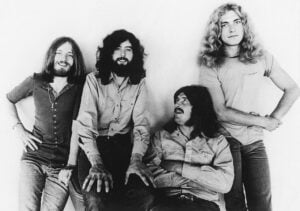Why ’70s Rock Musicians Turned to Drugs Too Much

LOS ANGELES, CA - JANUARY 28: Steven Tyler at Steven Tyler and Live Nation presents Inaugural Janie's Fund Gala & GRAMMY Viewing Party at Red Studios on January 28, 2018 in Los Angeles, California. (Photo by Tommaso Boddi/Getty Images for Janie's Fund)
Rock ‘n’ roll and substance abuse have long shared a reputation for going hand in hand. From wild parties to songs laced with references to drinking and drugs, it’s no secret that rock stars often lived as hard as they played. Headlines about musicians spiraling into addiction or checking into rehab weren’t rare then—and they aren’t rare now. But the ’70s brought this connection into sharper focus, with countless artists falling into the grip of excess.
Why was this era so intense for rock musicians? Fame, grueling schedules, and the weight of constant pressure all played a part. The rock scene itself almost encouraged experimenting with substances. Drugs and alcohol became a way to cope with stress, fuel creativity, or simply keep up with the fast-paced lifestyle. Unfortunately, this led to addiction, health struggles, and even untimely deaths.
Still, some found their way out of the darkness. Many artists reclaimed their lives through treatment and second chances, proving it’s possible to move beyond the chaos and keep the music alive.
Why Do Musicians Turn to Drugs?
Substance misuse frequently forms a part of the story for many musicians, who face unique hurdles in the realm of fame and creativity. Celebrities are particularly susceptible to drug and alcohol abuse, according to mental health psychologist Denny Kolsch, who specializes in addiction treatment. Kolsch told DrugRehab.com, “It’s often easier to use drugs and alcohol than to be the sober person in the room, especially when you’re seeking approval.” Musicians are frequently under tremendous pressure to perform and blend in with a culture that views substance abuse as normal.
Take Steven Tyler, Aerosmith’s lead singer, for example. He admitted that cocaine helped the band survive grueling tours, claiming it boosted their energy to perform night after night. Similarly, Martin Torgoff, author and pop culture historian, told Rolling Stone that during the disco era, many artists used drugs as part of their creative process. “The artists of that time used everything for their palate, their palate of creativity,” he explained.
Beyond creativity, many musicians turn to drugs to cope with physical or emotional pain. Kurt Cobain of Nirvana, for instance, used heroin to dull chronic stomach pain. In a 1992 letter to his fans, he admitted the drug numbed his body but failed to provide a real solution. Despite his vow to quit, addiction ultimately consumed him.
Kolsch also highlighted how fame amplifies the problem. “Many musicians have pre-existing issues with substance use or mental illness,” he said. “Once they become famous, they have more money to spend on drugs, leading to frequent use and higher tolerance.” The cycle can feel impossible to escape, leaving many artists trapped in addiction and chaos.
While the pressures of the music world are intense, they’re not insurmountable. For some, seeking help has been the first step toward breaking free and rediscovering life beyond the haze.
Why ‘70s Rock Stars Turned to Cocaine
Cocaine made a dramatic reappearance in the 1970s and became a mainstay of the rock ‘n’ roll way of life. The stimulant was embraced by musicians backstage before shows, at parties, and even during recording sessions. The properties of cocaine, such as energy spikes, exhilaration, and acute mental focus, made it seem like the ideal partner for the hectic schedules and late-night performances of the time. It wasn’t just about the high. However, there were hazards associated with the attraction, including restlessness, overheating, and the constant potential of overdosing.
Some of the biggest names in music were caught up in the cocaine craze. Sly Stone and Ozzy Osbourne were among the many stars who indulged. Osbourne’s band, Black Sabbath, reportedly spent $75,000 on cocaine in 1972 alone, even arranging private planes to fly in their supply.
Meanwhile, Studio 54—the legendary New York nightclub that opened in 1977—became a hotspot for celebrity debauchery and cocaine use. Cher, Michael Jackson, and other A-listers frequented the strobe-lit dance floor while a giant moon structure, complete with a cocaine spoon, loomed overhead. Mark Fleischman, a former owner of Studio 54, described the scene in his memoir, revealing that stars would gather in his office to snort dozens of lines of cocaine. Hollywood decorator Kevin Haley, a regular at the club, reflected on the era in Vanity Fair:
“Cocaine was a positive thing. It had no side effects. Or so we thought.”
The ’70s rock scene’s love affair with cocaine was as intense as it was destructive, leaving a trail of broken lives and cautionary tales in its wake.












